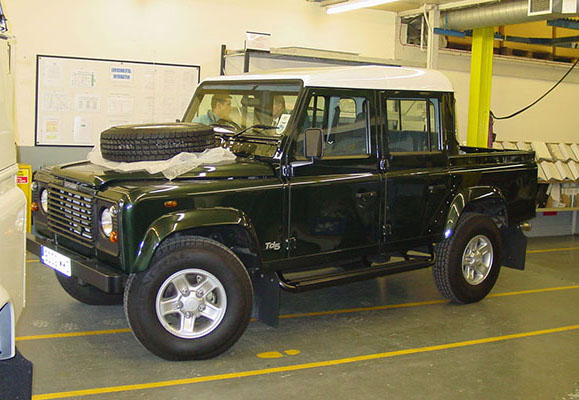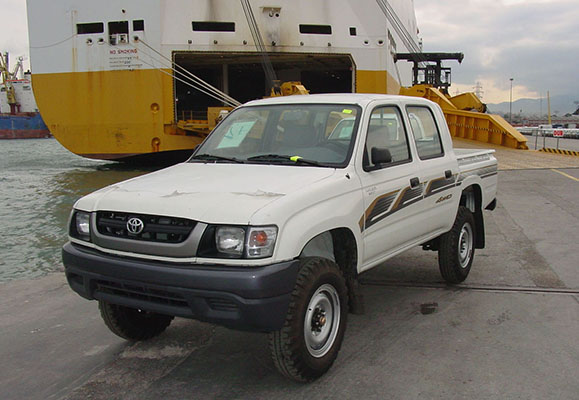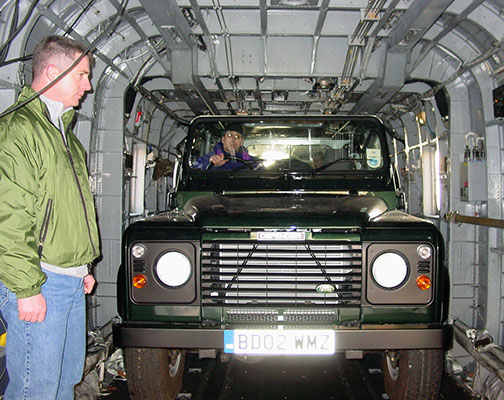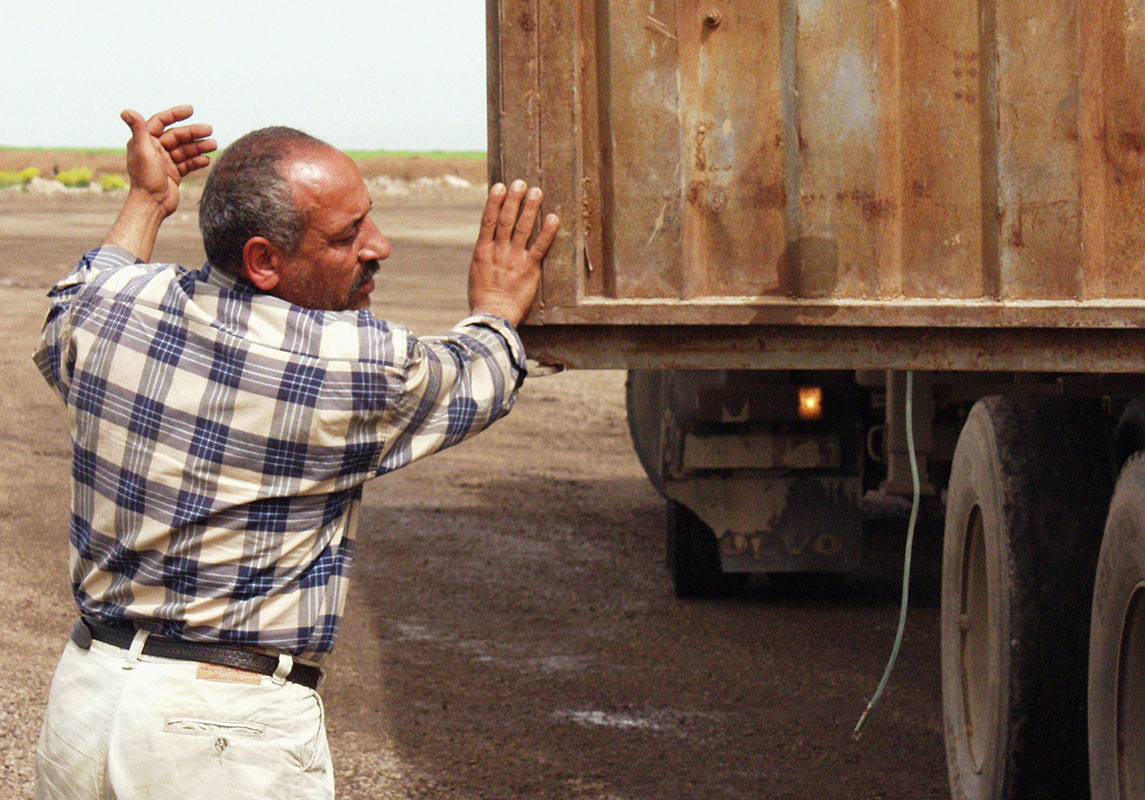NOTE
*Pseudonyms have been used for all military personnel with a rank lower than lieutenant colonel.
DOWNLOAD
Part of the original plan for the invasion of Iraq was for the 10th SFG to stage from Diyarbakir, and drive across the border into northern Iraq ahead of the 4th Infantry Division. Among various other forward elements located in Turkey preparing to execute the plan was a small team from U.S. Army Special Operations Command and Special Operations Support Command. Soscom’s Lieutenant Colonel Mark Edwards served as the logistics officer for CJSOTF-north, and supervised the support actions in Turkey as part of his duties. However, it was the usasoc contracting officer, Captain Tad Woodcock*, who turned out to be the key man in what became the cjsotf’s saga of nonstandard vehicles.
Even before CJSOTF-north troops deployed to Europe, usasoc support planners had authorized the 10th SFG a fleet of 236 nonstandard vehicles—commercial trucks modified for military use. Beginning in October 2002, Woodcock and Chief Warrant Officer 4 Jose Molinaro* from SOSCOM’s 528th Special Operations Support Battalion worked through soceur’s logistics officer to draw up the specifications of the fleet. Woodcock was given a preliminary budget of over $5 million to purchase, modify, and transport the vehicles to the 10th SFG at Diyarbakir.1
After evaluating various commercial vehicles, Woodcock and Molinaro concluded that Land Rover Defenders best suited the 10th SFG’s needs in northern Iraq. Land Rovers were legendary off-road vehicles common to the area, were already used by special operations forces around the world, and had a solid reputation for reliability. Land Rover also had an assembly plant in Turkey, and Woodcock reasoned that the vehicles would not only be cheaper in Turkey, but also by purchasing them locally, they would avoid having to arrange and pay for shipping.2

When Woodcock negotiated with Land Rover Turkey management, the best price Woodcock could get was $36,000 for each vehicle—before modifications. Woodcock had allotted $30,000 per vehicle in order to stay within budget and still have the funds to make the required combat modifications. Wisely declining Land Rover Turkey’s offer, Woodcock went in person to the Land Rover factory in Solihull, England, to see if he could negotiate a better deal. Telling the Land Rover salespeople that he was there to purchase replacement vehicles for an operation, Woodcock detailed that the vehicles were to be shipped to a warehouse in Izmir, Turkey, where they would be stored until needed. The prospect of a large order satisfied management, and Woodcock negotiated a factory-direct price of less than $25,000 per Land Rover Defender—including almost all modifications and delivery costs.3

The purchase deal with Land Rover left Woodcock with enough funds to purchase thirty Toyota Tacoma pickup trucks in Germany and another twenty-five vehicles in Turkey to use around the projected cjsotf-North headquarters at Diyarbakir. By mid-March, Woodcock had over two hundred vehicles stored in the warehouse he had leased in Izmir. This warehouse became Woodcock’s duty station for several weeks, as he and a team of mechanics outfitted the trucks with satellite tracking devices and radio platforms, added bumper numbers to each, and permanently attached extra keys to the dashboards.4
As war neared, it became clear that the Turkish government would not allow U.S. forces to use Turkey as a staging area for an attack on Iraq. The Turkish authorities placed Woodcock’s warehouse under armed guard and scrutinized everything and everybody going in or coming out. According to Edwards, “The Turkish government had twenty-four hour guards on us. Anything we did with regards to getting mechanics in and out of there was under close scrutiny. In general, anything you wanted to bring into country or wanted to take out of country, you had to account for down to serial number detail. They didn’t want to know how many containers you had; they wanted to know what was in each container.”5

Around the first of March, Woodcock was ordered to make arrangements to get the vehicles out of Turkey as soon as possible. The customs impound restriction was rescinded, but the Turks would not allow the logistics team to drive the vehicles across the border into Kurdish-controlled northern Iraq. Woodcock then set about arranging to ship the vehicles by barge from the port of Marmaris, some three hundred kilometers southeast of Izmir, to a Greek island where they could be transferred to a Greek ferry, taken to the Greek side of the island of Cyprus, and from there flown into Iraq on U.S. aircraft. The plan was solid, as far as transportation logistics went. Unfortunately, this particular plan did not take into account the politics of the situation.6
As soon as arrangements were finalized, Woodcock led the first convoy of twenty-five vehicles on the long drive to Marmaris. No longer under customs restriction, the convoy made the trip during daylight hours with no attempts to disguise the vehicles. Turkey was abuzz with news and controversy over the expected U.S. attack on Iraq and what part Turkey might play in it. Woodcock and his convoy of white Land Rovers sporting gun mounts and military markings was a media magnet and news crews filmed the convoy the entire way. When the convoy finally arrived in Marmaris, it was greeted by police officers and threats of arrest. While Woodcock successfully reminded the police that the Status of Forces Agreement prohibited them from arresting him or any of the American soldiers under his command, he could not protect his Kurdish drivers. Later Woodcock found out that in fact there was no Status of Forces Agreement between the United States and Turkey7
Woodcock watched in dismay and frustration as the police rounded up his drivers: “I knew if I just let them take the drivers, they would beat them up, run them off, and I’d be stuck with all these vehicles.” Woodcock finally told the police that if they took his drivers into custody, they would also have to take him since they were in his employ. Woodcock “accompanied” his drivers to the police station, where the drivers were held and interrogated for twelve hours before everyone was finally released and allowed to return to the hotel. While the team was technically free, the police put armed guards on the vehicles and refused to let Woodcock or the others near them. The police also followed Woodcock and his party whenever they left the hotel. By this time, Woodcock suspected that in addition to the issue of the military vehicles, the Turks seemed insulted that he had hired all Kurdish drivers.8
The senior Turkish military representative in Marmaris was a high-ranking naval officer who soon made a point of involving himself in the conflict. He made no pretense at hiding his negative feelings regarding the convoy, and informed Woodcock in no uncertain terms that if he could, he would arrest them all—Americans included—and confiscate the vehicles. He actually did attempt to bully Woodcock into moving the vehicles onto his naval installation, but Woodcock declined, knowing that if he gave in, he would never see the vehicles again. Woodcock’s resistance was rewarded when the U.S. Embassy made it clear to the Turkish authorities that the vehicles were considered to be U.S. military equipment, and demanded that the Turks release the trucks and all the U.S. personnel and contracted drivers immediately. The Turks complied with the embassy’s request, but they scuttled Woodcock’s plan to ferry the vehicles out of the country by intimidating the contracted ferry owner into reneging on the plan. Foiled at the coast, Woodcock had no choice but to return the vehicles to the warehouse in Izmir.9

About this time, Colonel Cleveland sent Lieutenant Colonel Keith Anderson to negotiate with the Turkish government for the release of the vehicles. After some very hard and intense negotiations, Anderson obtained the necessary release, though with conditions. Due to the politically sensitive nature of Turkey’s involvement with the American military, the Turks insisted that the vehicles be transported on enclosed trucks and that all travel be conducted at night. Major protests were already occurring all along the route to the Iraqi border, exacerbated by the fact that the hundreds of supply trucks from the 24th Theater Support Group out of U.S. Army Europe had effectively blocked traffic on the main highway between Izmir and Diyarbakir.10
Woodcock contracted with a Turkish transport company for thirty-five cargo trucks. Edwards explained, “When we finally did get permission to leave, the way we did it was by three convoys: 210 vehicles broken into three convoys, two vehicles per truck. They were really small trucks with tarps over [them], so you couldn’t tell what was in the back.” Feeling a distinct sense of personal responsibility for the success of the mission, Woodcock took it upon himself to accompany each convoy to the delivery point in Irbil, Iraq. While he led the first convoy from Izmir to its final destination, thereafter the lead driver was given the bill of lading and other documents for getting through the border checkpoint. Woodcock then met each new convoy a few miles inside Turkey and accompanied it across the border into Iraq and the rest of the way to Irbil.11

The first convoy departed the warehouse in Izmir on the night of 25 March 2003. Woodcock rode in the cab of the lead truck. As the convoy headed for Habur Gate, the only border crossing point between Turkey and Iraq, Woodcock found that the biggest challenge was not the long, dusty journey or the horde of civilian traffic, but the Turkish government: “Every time we came up on a Turkish police vehicle, they stopped us and checked all our documentation.”12
While security was a constant concern for this convoy representing a country newly at war, once the trucks crossed into Iraq, paradoxically Woodcock and the drivers felt a sense of relief. Most of the route through Iraq was actually in Kurdish territory, which made the Kurdish drivers feel much more at home than they had felt in western Turkey. Even so, the only hostile activity against any of the convoys occurred in Mosul. An Iraqi taxi raced around one of the trucks and halted suddenly, causing the vehicle to make an emergency stop. While they were stopped, a crowd of Iraqis gathered and began to throw rocks at the trucks, breaking a windshield. While the incident was stressful, it was not lethal, and they were soon able to maneuver around the taxi and continue on to Irbil.13
In Woodcock’s mind, the more realistic threat was that one or more of the contracted drivers might simply disappear with his truck and sell the nonstandard vehicles on the black market. Since he always rode in the lead vehicle with no way of communicating with the other trucks, Woodcock could not keep track of every truck every minute of the journey. At each rest break, he routinely checked each vehicle before they resumed traveling, both for safety and for inventory purposes. During one such rest break, Woodcock counted trucks and came up one short. His first thought was that the driver had absconded with the valuable cargo and Woodcock was out two nonstandard vehicles. By this time, the drivers knew the route to Irbil, so Woodcock told the lead driver to take the convoy on to Irbil while he took the last truck in line back toward Turkey to look for the missing truck. Woodcock backtracked all the way back to the border with no luck. Convinced that the truck and driver had vanished, Woodcock turned his truck around in resignation and headed toward Irbil. Along the way, however, he met up with his now-empty trucks returning to Turkey. Upon talking to the lead driver, Woodcock learned that the missing truck suffered a flat tire and left the convoy to get it repaired at a truck stop. Once the tire was fixed, the missing driver caught up with the rest of the convoy and delivered his cargo in Irbil. Woodcock and his driver simply missed seeing him in the mass of vehicles at the truck stop. Woodcock reported that he was pleasantly surprised and impressed with the honesty and work ethic of his drivers.14

The successful delivery of all the nonstandard vehicles had perhaps as much to do with Woodcock’s efforts to encourage loyalty among his drivers as their inherent honesty. He went out of his way to treat the contractors more like coworkers than hired hands, making gestures that cost him little but meant quite a bit to the drivers. Woodcock paid for the drivers’ meals at the roadside rest stops, and when they arrived in Irbil, they were fed at the American mess. Woodcock also allowed the drivers to take advantage of the drastically lower fuel prices in Iraq to increase their profit margins. Fuel in Turkey was between two and three dollars per gallon, but only fifty cents per gallon in Iraq; the drivers put just enough fuel in their trucks to get them out of Turkey and to the first truck stop in Iraq, where they then refueled for much less. Although the chosen fuel point only had one hose and, therefore, refueling stops took an extraordinarily long time, the strategy kept the drivers happy and Woodcock’s nonstandard vehicles safe.15
The last thirty-six nonstandard vehicles arrived in Irbil on 7 April. After nearly two weeks of nonstop convoy travel, all 236 vehicles finally found their way to the 10th SFG. As the Special Forces teams exchanged their locally procured vehicles for their custom-built Land Rovers or Toyota trucks, a tired and road-weary Captain Woodcock looked on with pride. After six long months of effort, his mission was finally completed.16
